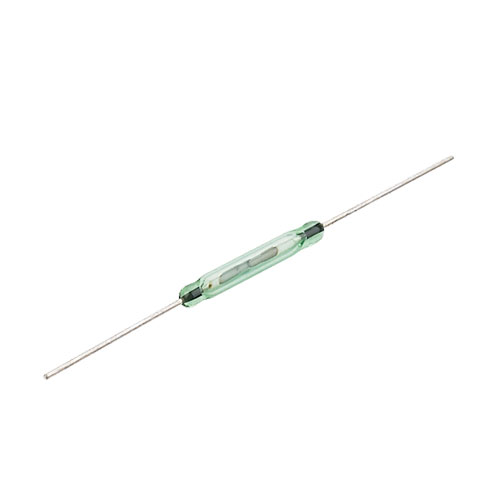Reed contacts
A good electrical connection is achieved by plating the contacting parts of the two reeds with a very thick layer of a non-magnetic precious metal, low resistivity silver is a more suitable plating material than corrosion resistant gold. There are also wet reed switches that use mercury, and the contacts of wet reed switches must be installed in pairs.
Reed switch reed contact construction
The two reed wires are made of a nickel/iron (NiFe) alloy (52% nickel).
Affected, reed leads that pass through the magnetic field must be ferromagnetic.
The three most popular materials are ferromagnetic in nature and easily annealed: iron, cobalt and nickel.
The tips of the two reed contacts are plated or sputtered with rhodium, ruthenium or iridium.
Contact Materials
Rhodium contacts Rhodium plated contacts are most often used. These contacts have very stable operating characteristics and long operating life from low to heavy loads due to rhodium's high melting point and high hardness properties.
Mercury contacts Mercury contact reed switches have a non-tripping operation and therefore do not require additional trip suppression circuitry. They have high power switching capability, very low and stable contact impedance characteristics, and long operating life. They can also be used for switching with high inrush currents.
Ruthenium contacts have a higher hardness than rhodium. Rhodium-plated contacts have better mechanical wear and thermal loss characteristics, but are only used for switching small loads. Because of these characteristics of ruthenium, Warnon Electronics has successfully developed double plated contacts with ruthenium oxide over rhodium or platinum. These double-plated contacts have very good switching characteristics from low to heavy loads.
Glass hermeticity
NiFe alloys are used for the outer encapsulation of glass tubes with a perfectly matched temperature coefficient of expansion (TCE).
The ends of the glass tube are heated and the glass is melted to form a hermetic seal covering both ends.
During the glass sealing process the glass cavity is usually filled with an inert gas (usually nitrogen) or cavity, which may create a vacuum, is evacuated. This vacuum usually supports high voltage switching (over 1000 volts)












